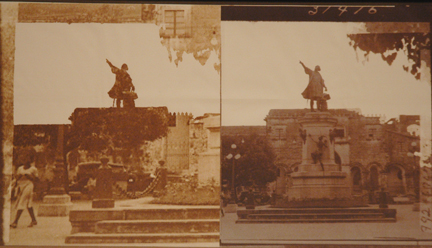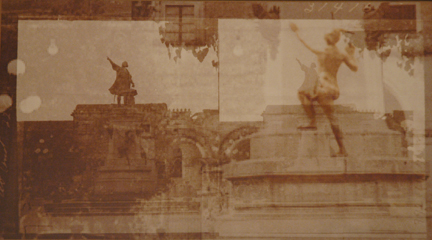About the Photographer
Parada, Esther
American, 1938-2005
In the late 1960s, an anthropologist friend took Esther Parada southwest of Chicago to visit a Native American burial site. Dixon Mounds, which would become both a state museum and a focus of controversy in the 1970s, had been used by woodland tribes and dates back to the tenth century. What Parada saw was a gymnasium-sized area where a layer of earth had been removed to reveal an open field of exposed graves. She photographed the site with scientific precision using black-and-white film and a 35mm camera. At the time she had no plans for the pictures, but later she grew interested in making people aware of this civilization; compared to the native peoples and traditions she had known in the two and a half years she spent in Bolivia, the presence of Native American culture and history in the United States seemed close to extinguished.
In 1976, Parada created the installation Site Unseen at the artist space and dance center in Moming. It included a dozen 2-by-6 foot banners of anonymous skeletons hanging in rows such that the viewer could walk amongst them. (At one point in the exhibition, Parada collaborated with a group of dancers on a performance done in that space.) As a kind of footnote to the banners, comparatively small-scale Van Dyke brown prints of the same skeletons were positioned along the walls of the room. Unlike the banners, the photographic image in the prints only appears where the emulsion had been hand-painted on the paper. The partial emulsion suggests a partial revelation, a fragmentary image of an otherwise scientific document. It is just one way in which these pictures combine personal touches, including hand-painted coloring, with a scientific gaze, underscored by the penciled notes and information from the excavation written on the prints. "#15" takes its title from its classification as "burial #15," and the central figure, documented as "female 32 years," is flanked on either side by the hand-written notes "artifact #D32 small polished black Powell Plain-like jar" and "artifact #D31 small shell tempered plain jar w/ rough loop handles."
Esther Parada was an artist, writer, and educator whose work frequently involves the political, historical, and social relations between the US and Latin America. She completed a BA in art history, history, and literature from Swarthmore College, Swarthmore, PA (1960); an MFA in painting and drawing from Pratt Institute, Brooklyn, NY (1962); and an MS in photography from the Institute of Design at the Illinois Institute of Technology, Chicago, IL (1971). Her mid-1960s Peace Corps assignment was teaching art and photography at the Escuela de Artes Plasticas, Universidad de San Francisco Xavier, in Sucre, Bolivia. She came to Chicago on her return in 1967. Her work has been exhibited at Gallery 312, Chicago; George Eastman House, International Museum of Photography and Film, Rochester, New York; Bunting Institute, Radcliffe College, Cambridge, Massachusetts; Museum of Fine Arts, Houston; Museum of Contemporary Art, Chicago; Centre National de la Photographie, Palais Tokyo, Paris, France; The Museum of Modern Art, New York; and California Museum of Photography, Riverside, California. Her multiple-frame works "Past Recovery" (1979) and "Memory Warp" (1980) layer images and text related to family history, and are represented in the Museum of Modern Art, New York; The Art Institute of Chicago; and the Museum of Fine Arts, Houston. In 1980 Parada was an artist-in-residence in Mexico City with the Mexican Council of Photography. She was also a two-time National Endowment for the Arts recipient (1982 and 1988) and an SPE Honored Educator (1994).




